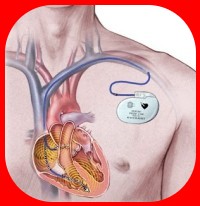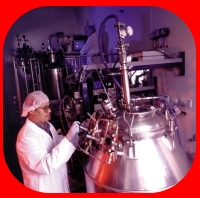Team:Montreal/Project
From 2008.igem.org
(→Continuous Cultures in Industrial Bio-Reactors) |
(→Biological Drug Delivery) |
||
| Line 55: | Line 55: | ||
===Biological Drug Delivery=== | ===Biological Drug Delivery=== | ||
| - | With biological alternatives now being increasingly explored as mechanisms of delivering therapeutics, a functionally oscillating system could prove invaluable to tailoring drug regimes to specific systems. Innumerable biological processes function in rhythmic on/off switches and being able to control the release of certain cellular components to such a schedule may permit more effective treatment.• | + | [[Image:mcgill_drugdel.jpg||thumb|left|200px]]With biological alternatives now being increasingly explored as mechanisms of delivering therapeutics, a functionally oscillating system could prove invaluable to tailoring drug regimes to specific systems. Innumerable biological processes function in rhythmic on/off switches and being able to control the release of certain cellular components to such a schedule may permit more effective treatment.• |
Revision as of 23:40, 2 August 2008
| Home | The Team | The Project | Parts | Notebook | Modeling | Links | Sponsors |
|---|
Contents |
Experimental
To create our functional bacteria, we intend to transform a line of MC4100 E. coli cells used by Elowitz with two plasmids. The first plasmid will contain the Repressilator (λcI, TetR and LacI), described in his 2000 paper. The second plasmid will be a triple-ligation of the I14001 bio-brick, the J40001 bio-brick and the Elowitz reporter (TetR, YFP).
If successful, we intend to observe and experiment with our cells with fluorescence microscopy and spectrophotometry. Using three individual filters, we can microscopically observe the oscillations of individual components by the three fluorescent proteins (ECFP, GFP and RFP) embedded in the system.
Project Objectives
Cloning Plan
PlasmidA: λcI + TetR + LacI (Elowitz Repressilator)
- Sent by Dr. Michael Elowitz (Caltech).
PlasmidB: I14001 + J40001 + TetR/YFP (Elowitz Reporter) + kan+
1. Cut J-brick genes out of plasmid with XbaI/SpeI
2. Ligate to J-brick genes to I-brick plasmid cut with XbaI (+dephosphorylation)
3. Select on amp+/kan+ plates (I-brick plasmid carries resistance for both ampicillin and kanomycin)
4. Cut of I and J-brick genes with EcoRI
5. Ligate genes to Elowitz reporter plasmid cut with EcoRI (3-way ligation)
6. Select on kan+ LB plates
Modeling
The modeling effort attempts to simulate a repressilator network using a system of coupled differential equations. The repressilator itself is modelled as a loop of three proteins which inhibit each other's growth. Each cell in the network contains a repressilator, and the cells communicate amongst themselves by exchanging an autoinducer molecule, which feeds back the repressilator loop. The simulation is currently done using Mathematica, along with the xCellerator and NDelayDSolve packages.
The model is assuming continuous levels of the different proteins, as well as a continuous spatial distribution of these proteins. It attempts to take into account lab issues such as depletion of the autoinducer molecule and leakage by introducing a time delay in the equations and by considering sparse distributions of cells within the field of view.
Once the model is set up, the goal is to explore different cell configurations and observe how the behaviour of the repressilator changes as a result. In particular, we are interested in the concentration of the auto-inducer molecule as a function of time, their period of oscillation, the speed with which the cells synchronise (if they do) or the phase difference between various clusters of cells (if they don't).
 "
"


